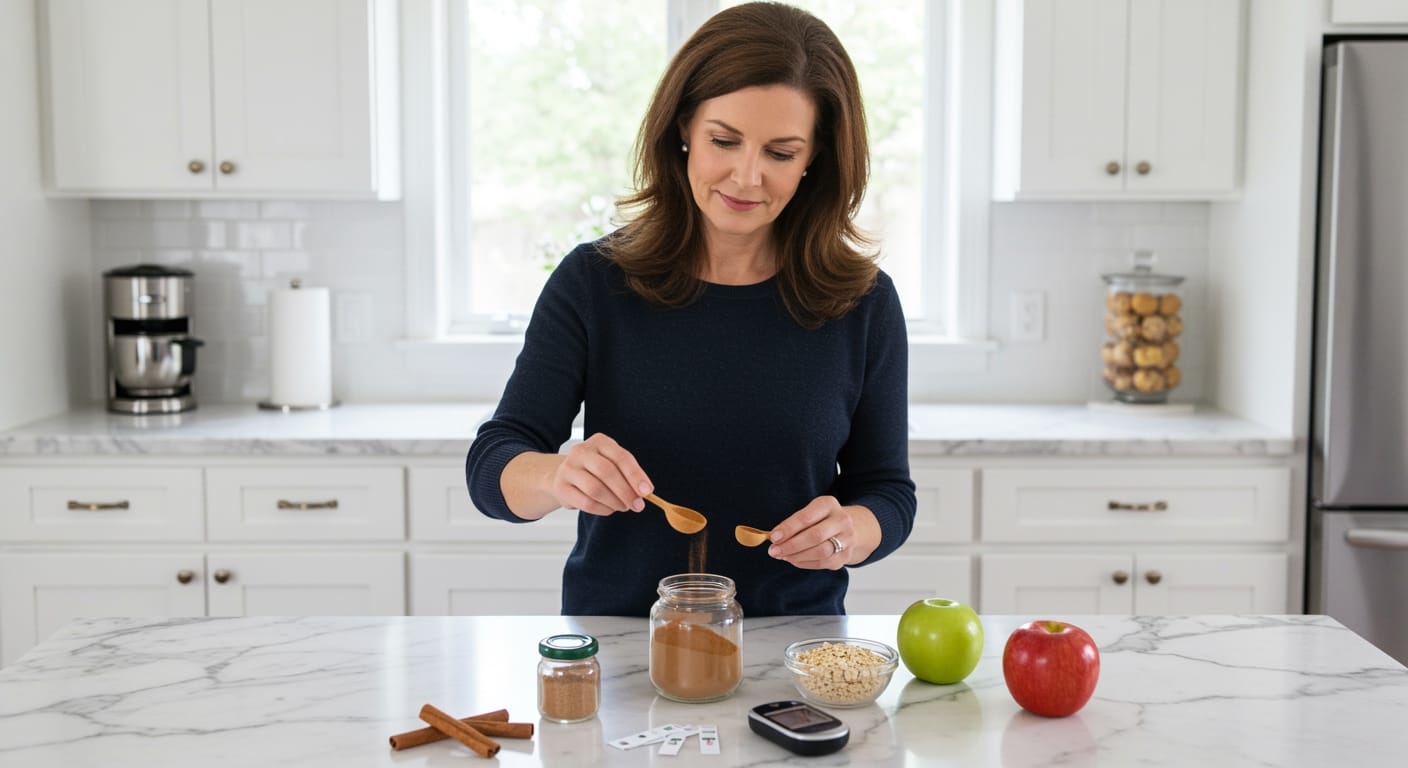✪ Key Takeaway: Cinnamon shows modest blood sugar benefits in studies, but results vary widely and it cannot replace proper medical treatment.
Introduction
Your grandmother probably told you cinnamon was good for you, but she never mentioned it could help control blood sugar.
Today, millions of people sprinkle cinnamon on everything from coffee to oatmeal, hoping it will magically lower their glucose levels and help them avoid diabetes complications.
Hi, I’m Abdur, your nutrition coach, and today I’m going to break down the real science behind cinnamon and blood sugar control, so you can make informed decisions about this popular spice.
What Does the Research Actually Show?
The most famous study on cinnamon came from Pakistan in 2003, where researchers gave people with type 2 diabetes 1 to 6 grams of cinnamon daily for 40 days.
The results looked promising at first glance.
Participants saw their fasting blood sugar drop by 18 to 29 percent, which sounds incredible.
But here’s where things get complicated.
Later studies tried to replicate these results and found much smaller effects or no effects at all.
A 2012 review of multiple studies found that cinnamon might lower fasting blood sugar by about 24 mg/dL on average.
That’s a modest improvement, but not the dramatic change many people expect.
✪ Fun Fact: The original Pakistani study used cassia cinnamon, which is different from the Ceylon cinnamon you might buy at health food stores.
How Much Cinnamon Do You Actually Need?
Most studies that showed benefits used between 1 to 6 grams of cinnamon per day.
To put that in perspective, one teaspoon of ground cinnamon weighs about 2.6 grams.
So you would need roughly half to two teaspoons daily to match the research doses.
That might not sound like much, but try eating two teaspoons of cinnamon every single day.
Your taste buds will get tired of it quickly, and you might experience some unpleasant side effects.
Some people turn to cinnamon supplements to avoid the taste issue, but supplement quality varies wildly between brands.
Plus, supplements bypass the natural fiber and other compounds found in whole cinnamon that might contribute to its effects.
✪ Pro Tip: Start with half a teaspoon daily and gradually increase to assess your tolerance before jumping to higher doses.
Are There Any Risks You Should Know About?
Cassia cinnamon, the most common type sold in grocery stores, contains a compound called coumarin.
High amounts of coumarin can potentially damage your liver over time.
The European Food Safety Authority recommends limiting coumarin intake to 0.1 mg per kilogram of body weight daily.
For a 150-pound person, that means no more than about 6.8 mg of coumarin per day.
One teaspoon of cassia cinnamon can contain 5 to 12 mg of coumarin, which puts you right at or above the safety limit.
Ceylon cinnamon contains much less coumarin, but it’s more expensive and harder to find.
If you’re taking blood sugar medications, cinnamon might also enhance their effects and cause dangerous low blood sugar episodes.
✪ Note: Always consult your doctor before adding therapeutic amounts of cinnamon if you take diabetes medications.
What’s the Best Way to Use Cinnamon?
Instead of relying on cinnamon as a magic bullet, think of it as one small tool in your blood sugar management toolkit.
The most practical approach is to use cinnamon to replace sugar in recipes and beverages.
Sprinkle it on oatmeal instead of adding brown sugar, or use it to flavor coffee instead of syrup.
This way, you get potential benefits while also reducing your sugar intake, which definitely helps blood sugar control.
You can also add cinnamon to protein smoothies, yogurt, or even savory dishes like roasted vegetables.
The key is consistency rather than massive doses.
Remember that the biggest impact on your blood sugar comes from your overall diet pattern, not from any single superfood or spice.
✪ Pro Tip: Combine cinnamon with fiber-rich foods like oats or apples to maximize its potential blood sugar benefits.
The Bottom Line
Cinnamon shows modest promise for blood sugar control, but it’s not the miracle cure that social media makes it out to be.
As I always tell my clients, “There are no shortcuts to good health, only smart choices that add up over time.”
I’d love to hear about your experiences with cinnamon or any questions you have about natural approaches to blood sugar management – drop a comment below and let’s continue this conversation.
References
At NutritionCrown, we use quality and credible sources to ensure our content is accurate and trustworthy. Below are the sources referenced in creating this article:
- PMC: Cinnamon: A Multifaceted Medicinal Plant
- Diabetes Care: Cinnamon Improves Glucose and Lipids of People With Type 2 Diabetes
- Medical News Today: Can a Daily Dose of Cinnamon Help Lower Blood Sugar?
- Oxford Academic: The Effect of Cinnamon on Glucose of Type 1 and Type 2 Diabetes





